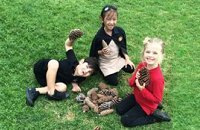The Guardian – Justine Larson
A creative study in the July issue of the Journal of the American Academy of Child and Adolescent Psychiatry examined levels of aggression in 1,287 twins and triplets in Southern California born between the years of 1990 and 1995. The authors used satellite imagery to find an aggregate measure of vegetation called the Normalised Differential Vegetation Index (NVDI) surrounding the home. The study found that both in the short term (6-months to 1-year) and the long term (1 to 3 years), having greenspace within 1000 meters was associated with reduced aggressive behaviours in this group of 9 to 18 year olds. Even when authors controlled for things like socioeconomic factors, age, gender, race, self-rated neighbourhood quality, maternal depression, traffic density, and even ambient temperatures, the difference in aggressive behaviours remained. In the sample studied, boys, people with lower perceived neighbourhood quality, children born to mothers who smoked, and those with lower socioeconomic status were more likely to be aggressive.(more)

